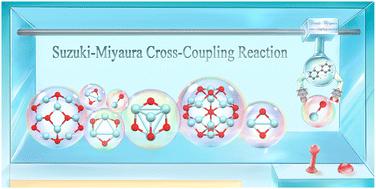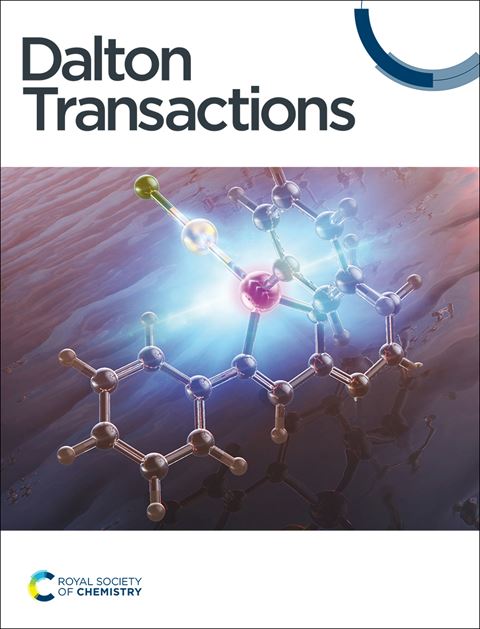The catalytic performance of (ZrO)n (n = 1–4, 12) clusters for Suzuki–Miyaura cross-coupling: a DFT study
IF 3.5
3区 化学
Q2 CHEMISTRY, INORGANIC & NUCLEAR
引用次数: 0
Abstract
Superatoms are special clusters with similar physicochemical properties to individual atoms in the periodic table, which open up new avenues for exploring inexpensive catalysts. Given that the ZrO superatom possesses the same number of valence electrons as a Pd atom, the mechanisms of the Suzuki–Miyaura reaction catalyzed by (ZrO)n (n = 1–4) clusters have been investigated and compared with the corresponding Pdn (n = 1–4) species to explore superatom-based catalysts for the formation of C–C bonds via a density functional theory (DFT) study. It was interesting to find that the catalytic activities of (ZrO)n (n = 1–4) towards the Suzuki–Miyaura reaction gradually improved as the cluster size increased. Therefore, to obtain more efficient catalysts, the catalytic activity of a well-designed (ZrO)12 nanocage towards this cross-coupling reaction has been further evaluated. Gratifyingly, this nanocage shows excellent catalytic performance for the considered coupling reaction, which is even comparable to that of the commonly used Pd catalyst and outperforms the corresponding Pd12 cluster. We hope this study can not only provide valuable guidance for the development of noble metal-like catalysts for C–C bond formation, but also expand the application of superatoms in the catalysis of organic reactions.

(ZrO)n(n = 1-4,12)簇对铃木-宫浦交叉偶联的催化性能:DFT 研究
本文章由计算机程序翻译,如有差异,请以英文原文为准。
求助全文
约1分钟内获得全文
求助全文
来源期刊

Dalton Transactions
化学-无机化学与核化学
CiteScore
6.60
自引率
7.50%
发文量
1832
审稿时长
1.5 months
期刊介绍:
Dalton Transactions is a journal for all areas of inorganic chemistry, which encompasses the organometallic, bioinorganic and materials chemistry of the elements, with applications including synthesis, catalysis, energy conversion/storage, electrical devices and medicine. Dalton Transactions welcomes high-quality, original submissions in all of these areas and more, where the advancement of knowledge in inorganic chemistry is significant.
 求助内容:
求助内容: 应助结果提醒方式:
应助结果提醒方式:


